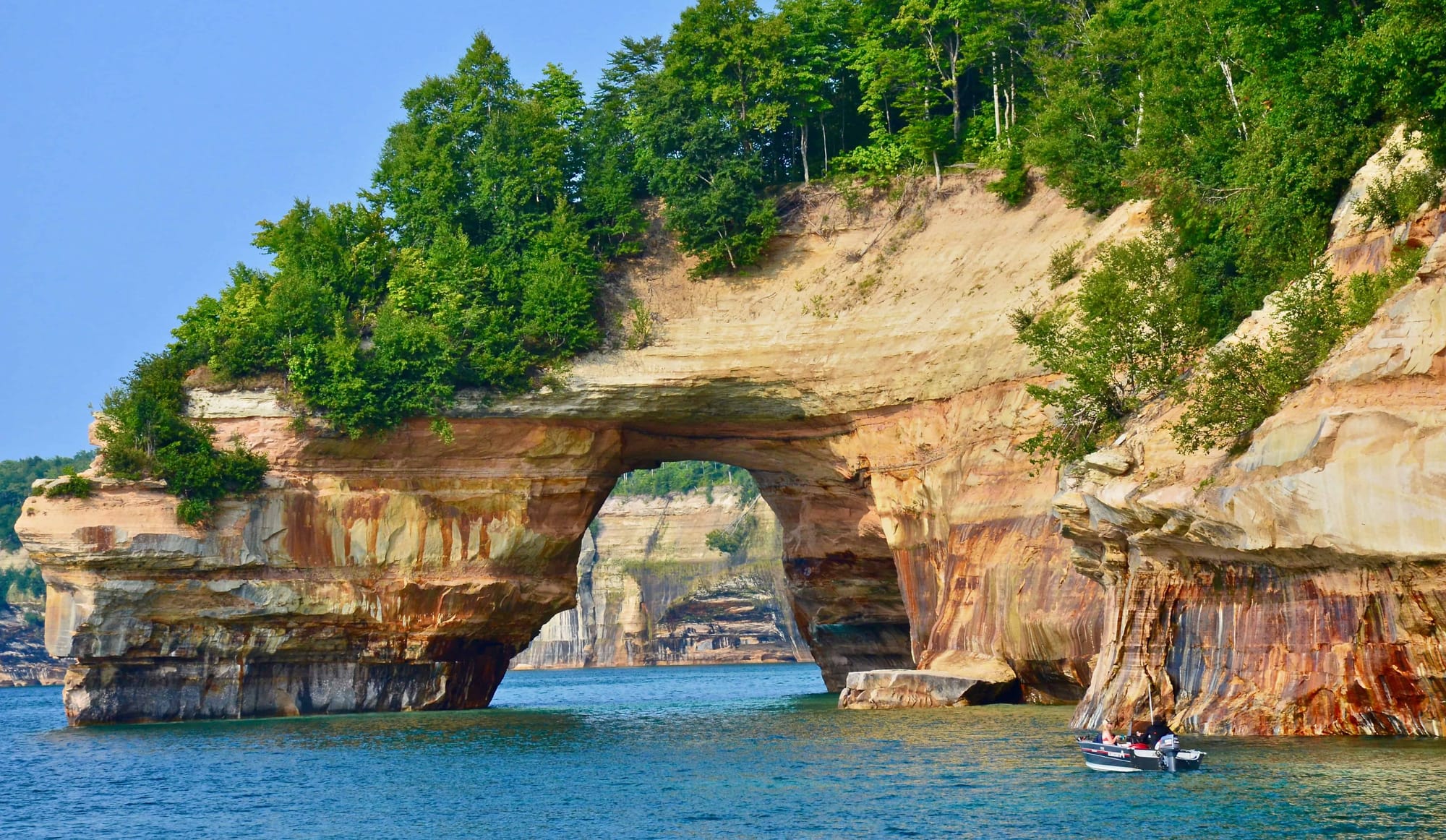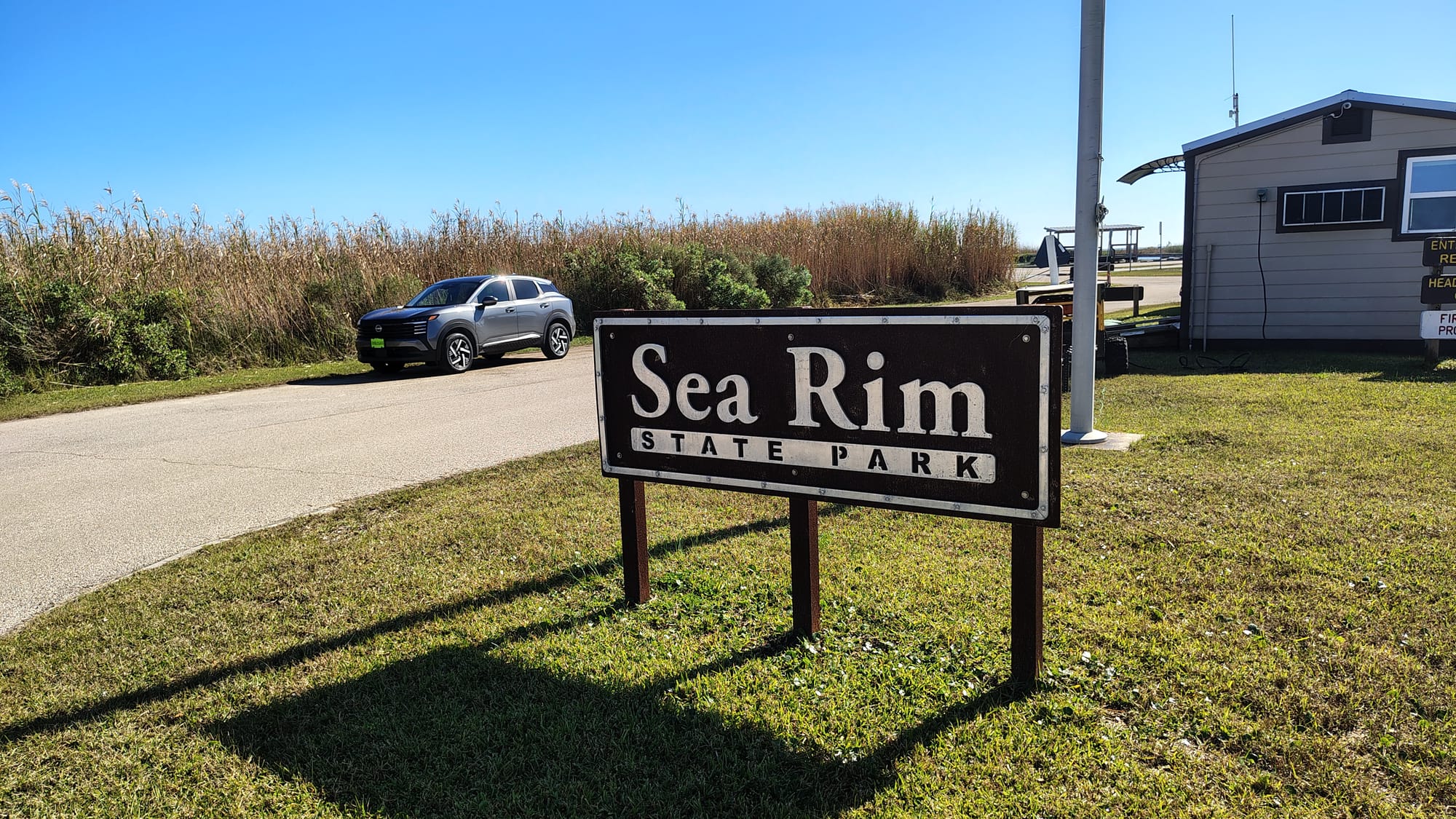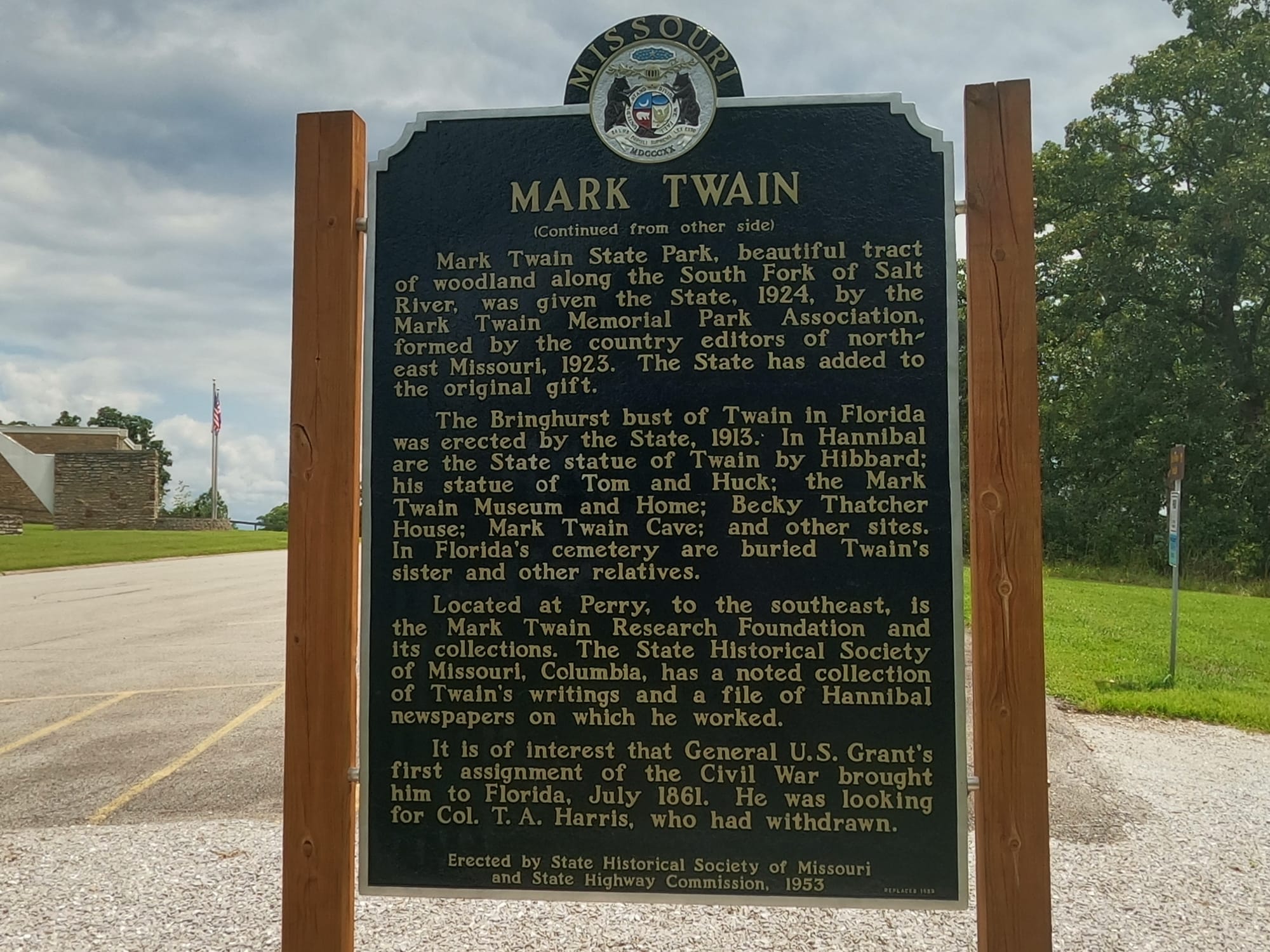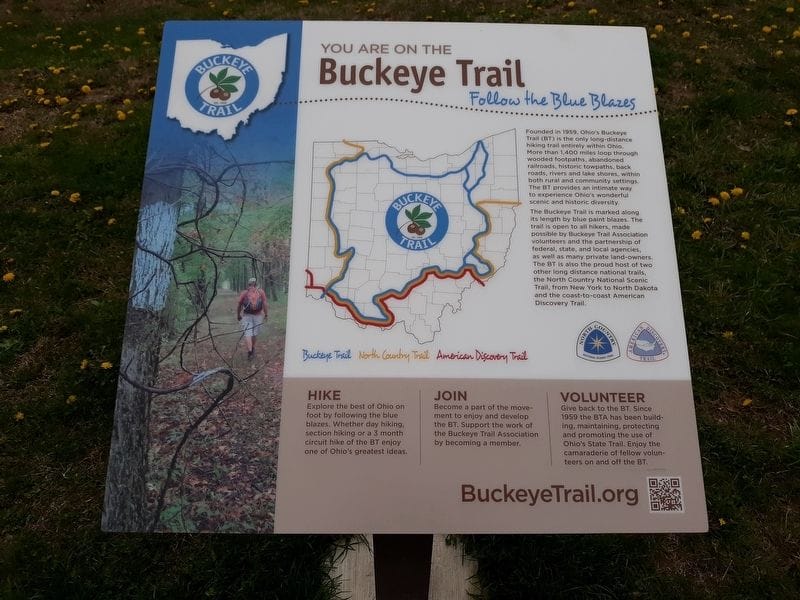
Buckeye Trail
Trail Map
Interactive map showing the trail route for Buckeye Trail. The map displays topographic information and trail markers.
Elevation Profile
Elevation data not available for this trail.
Chart showing elevation changes along the trail distance. Hover or focus on the chart to see specific elevation values at each point.
The Buckeye Trail is a gem nestled in the heart of Ohio, weaving its way through diverse landscapes, historical sites, and natural wonders. History:
The Buckeye Trail was conceived in the early 1950s by Clarence "Johnny" Appleseed Miller, who envisioned a continuous loop trail encircling the state of Ohio. His dream was to create a pathway for people to connect with nature, appreciate Ohio's beauty, and foster a sense of community among hikers.
With determination and support from fellow outdoor enthusiasts, Miller's vision became a reality.
The Buckeye Trail Association (BTA)
In 1958, Merrill Gilfillan, a wildlife biologist, wrote an article for the Columbus Dispatch proposing a trail from Cincinnati to Lake Erie. His vision was to create a trail that would encourage young people to slow down and learn about their native land. Inspired by this article, several individuals, including Merrill himself, met in Columbus in February 1959 to discuss building such a trail. In June of that year, they formed a non-profit organization called The Buckeye Trail Association (BTA).
The BTA dedicated the first 20 miles of the Buckeye Trail on September 19, 1959, in Hocking County. Among the 34 people making that dedication hike was Emma Gatewood, the BTA’s most famous grandma. From this modest beginning, the trail continued to grow, eventually spanning over 1,444 miles across Ohio. It was completed near Deer Lick Cave in the Cuyahoga Valley National Recreation Area in 1980.
The primary purpose of the Buckeye Trail Association is to promote the construction, maintenance, and use of a state-wide trail system within Ohio. The trail provides access to historical and scenic spots throughout the Buckeye State. While primarily a footpath, certain sections are designated for use by horseback riders and other non-motorized users.
Today, the BTA is a robust community of volunteers who maintain and promote the trail. They continually work to improve the trail, moving road sections off the roads and upgrading off-road segments to high-quality trails. Beyond trail management, the BTA also hosts social events, workshops, and educational gatherings for its members.
Follow the Blue Blazes . . .
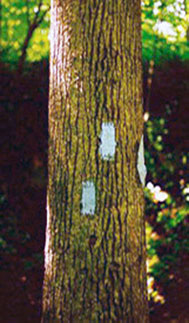
The trail is identified by blue blazes, 2" wide by 6" high, on trees or poles. A single blaze marks the trail where the route is fairly straight or obvious, while a double blaze marks a turn with the upper blaze offset to indicate the new direction. A double blaze with no offset simply means pay attention – the trail route may not be obvious.
Here's an overview of the trail's sections, lengths, and a bit of its history:
Sections of the Buckeye Trail:
- North Country Trail Section: The Buckeye Trail shares a portion with the North Country National Scenic Trail, running from the Ohio-Pennsylvania border in East Liverpool to Lake Erie in Ashtabula County.
- Miami and Erie Canal Towpath Section: This section follows the historic Miami and Erie Canal towpath from Lake Erie at Cleveland to the Ohio River at Cincinnati.
- Whitetail Trail: This section traverses southern Ohio, passing through Shawnee State Forest and Shawnee State Park.
- Zaleski State Forest Loop: Located in southeastern Ohio, this section offers a loop trail through Zaleski State Forest, known for its scenic beauty and diverse flora and fauna.
- Scenic Trail Section: This section spans from Shawnee State Forest to Hocking Hills State Park, offering stunning views of the region's natural landscapes.
- Wilderness Trail: Passing through Wayne National Forest, this section provides a wilderness experience with rugged terrain and remote camping opportunities.
- Bridle Trail Section: This part of the trail follows bridle trails through the beautiful forests of eastern Ohio.
- Country Roads Section: Meandering through the rolling hills and farmland of central Ohio, this section showcases the state's rural beauty.
Lengths of Sections:
The lengths of the sections can vary, but they generally range from forty to sixty miles.
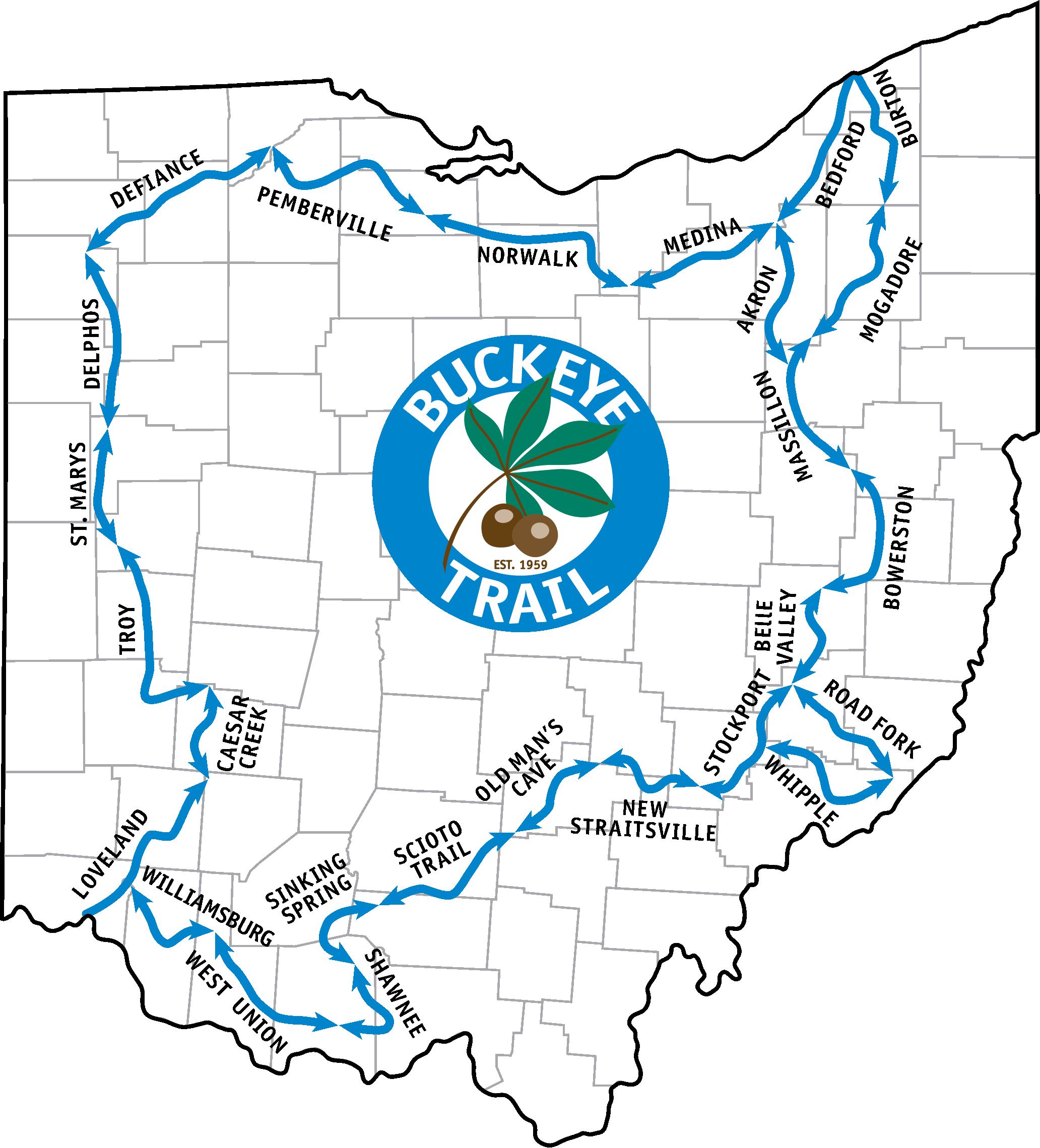
Sections to click and discover
- Overview
- Akron
- Bedford
- Belle Valley
- Bowerston
- Burton
- Caesar Creek
- Defiance
- Delphos
- Loveland
- Massillon
- Medina
- Mogadore
- New Straitsville
- Norwalk
- Old Man's Cave
- Pemberville
- Road Fork
- St. Marys
- Scioto Trail
- Shawnee
- Sinking Spring
- Stockport
- Troy
- West Union
- Whipple
- Williamsburg
Maintaining the Trail
Hiker usage of the different sections of the Buckeye Trail can vary greatly. The traffic can be very low in some areas, like remote parts of Ohio, coupled with high traffic areas like the Hocking Hills in other sections. Also, part of the trail is maintained by individual adopters, while other sections are on State properties, maintained by the different park agencies.
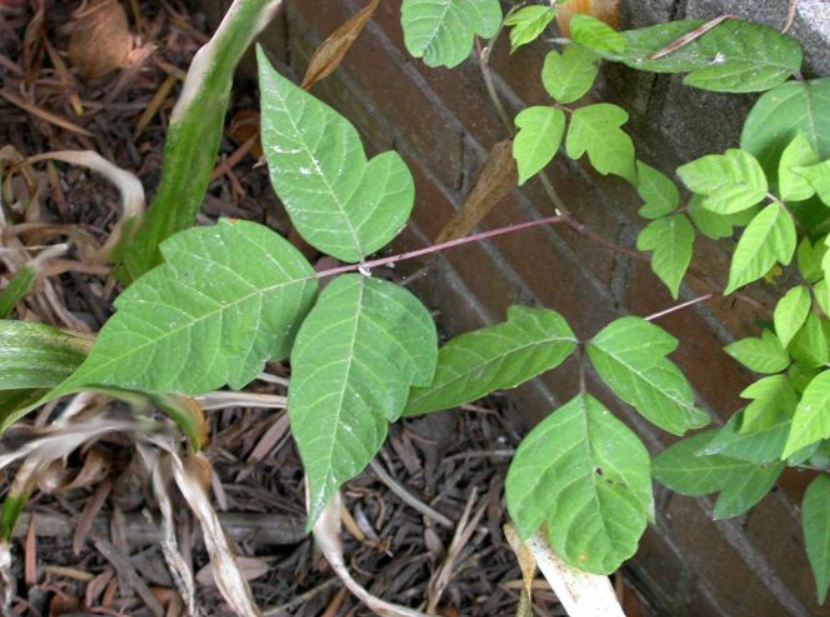
Ohio’s climate offers ample precipitation, moderate temperatures, and high humidity. The perfect weather to produce a lush, rapid growth of vegetation like berry bushes, poison ivy and tall flowers. It is surprising how fast the trail can become overgrown and it adds to the challenge of keeping the trail passable.
The trail is also adversely affected by logging operations, winter ice storms, and seasonal line squalls and tornadoes that put deadfall and debris on the trail. It can be a struggle for them to keep up with mother nature. Park systems have the equipment and manpower, not to mention a budget, to keep up with the chore of maintaining the trail. Trail adopters must manage with the resources and manpower that they have, and sometimes the trail can suffer.
In addition to annoying vegetation, all hikers should be prepared for frequent ups and downs on the trail located along the eastern and southern sides of the state. Technically, this terrain is not hilly. Rather, it is a system of streams that have dissected the Allegheny (or Appalachian) Plateau and left narrow, steep, convoluted ridges. Most of the off-road trail has been rebuilt over time to support 10% grades. This problem is most serious in Shawnee State Forest where the ridge top and the valley may be separated by 500' of elevation change or even more.
Old Man's Cave Section Personal Experience
I have spent a lot of time hiking the Buckeye Trail located in Old Man's Cave. It is one of my favorite hikes. The rock cliffs and meandering streams are amazing. Many of the trails in the Old Man's Cave section were originally built during the Great Depression of the 1930's.
Side Note on the Great Depression
During the Great Depression unemployment soared, and families struggled to make ends meet. President Franklin D. Roosevelt's New Deal initiatives brought hope to many Americans. One of the programs was the Civilian Conservation Corps (CCC), which not only provided employment but also played a vital role in conserving the nation's natural resources. The CCC constructed many stone pathways and structures in the National Park System and other park systems.
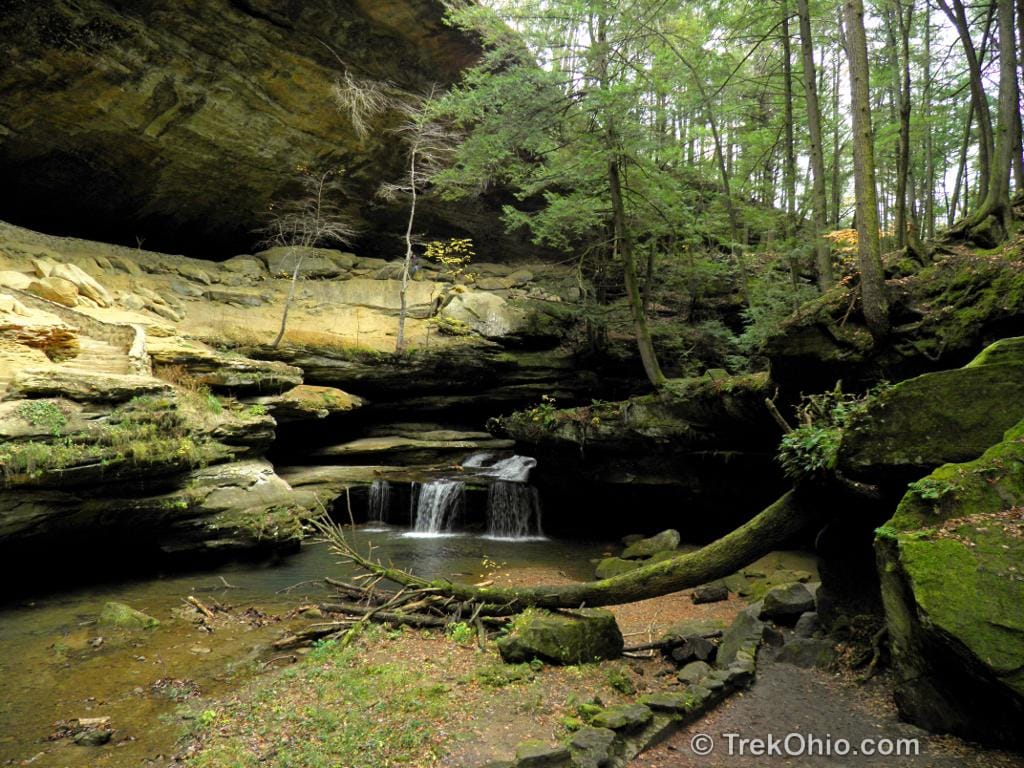
Old Man's Cave Section Personal Experience Continued
Old Man's Cave is a scenic and historic landmark located in the Hocking Hills region of southeastern Ohio, USA. The Buckeye Trail, a 1,444-mile hiking trail that loops around the state of Ohio, passes through this area.
The history of Old Man's Cave dates back centuries, with Native American tribes such as the Shawnee and Delaware having inhabited the region long before European settlers arrived. The cave derives its name from the legend of an old hermit who once lived there. Over time, erosion and natural processes have created a series of picturesque sandstone cliffs, waterfalls, and rock formations in the area, making it a popular destination for hikers, nature enthusiasts, and photographers.
As for the specific section of the Buckeye Trail that passes through Old Man's Cave, it covers a length of approximately 3 miles, offering hikers a chance to experience the beauty of the Hocking Hills landscape, including the iconic rock formations, lush forests, and cascading waterfalls.
Here are details about some of the main trails:
- Gorge Overlook Trail: This trail, approximately half a mile long, offers stunning views of the gorge and the rock formations below. It's relatively easy and wheelchair accessible, making it suitable for visitors of all ages and abilities.
- Buckeye Trail: As mentioned earlier, this trail is part of the larger Buckeye Trail system, which loops around the state of Ohio. It passes through Old Man's Cave and offers hikers a chance to explore the surrounding forest and natural features.
- Rim Trail: This trail follows the rim of the gorge and provides panoramic views of the Hocking Hills landscape. It's slightly more challenging than some of the other trails in the area but is still suitable for most hikers.
- Lower Gorge Trail: This trail takes hikers closer to the bottom of the gorge, allowing them to experience the towering cliffs and cascading waterfalls up close. It's a moderately difficult trail with some steep sections and stairs.
- Upper Gorge Trail: Similar to the Lower Gorge Trail, this trail also takes hikers into the depths of the gorge, offering views of additional waterfalls and rock formations. It's a bit shorter than the Lower Gorge Trail but still provides a memorable hiking experience.
- Old Man's Cave Trail: This is perhaps the most popular trail in the area, leading visitors through the heart of Old Man's Cave and past several notable landmarks, including the Devil's Bathtub and the Sphinx Head. It's a relatively easy trail with well-maintained paths and stairs.
My sister's property in Rockbridge, Ohio, backs up to part of the Buckeye Trail that about 4 miles. I love to go there, because the trails and the scenery are awesome. Also, there is very little traffic on the trails so it is very peaceful.

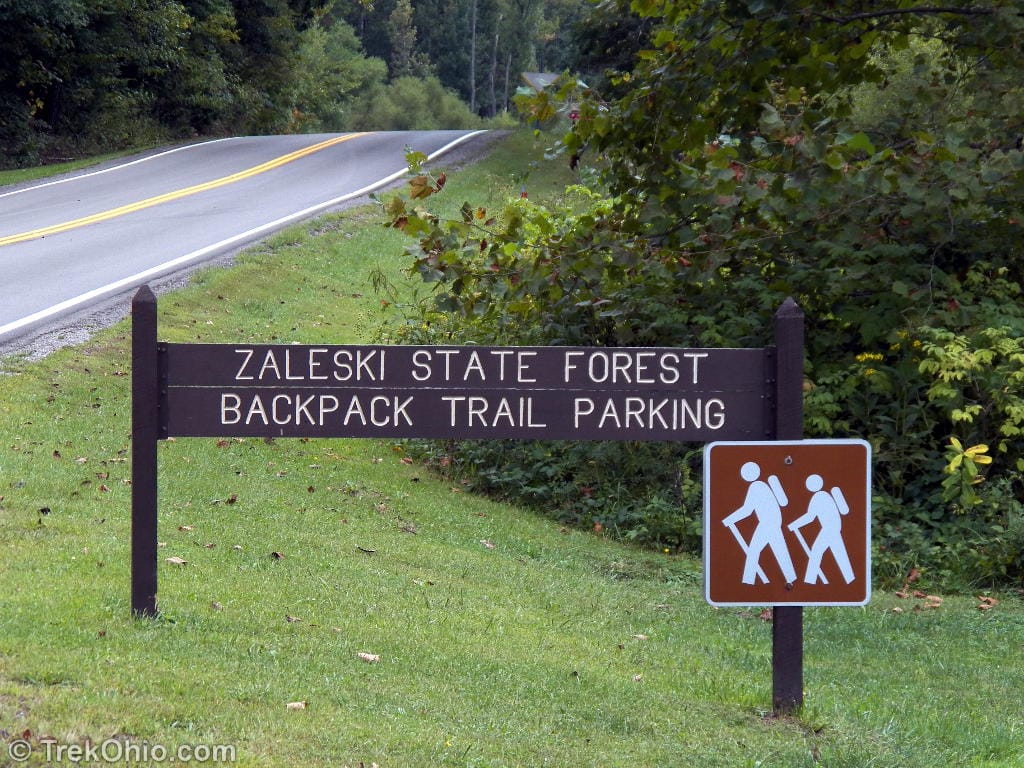
Zaleski State Forest Section Personal Experience
Zaleski State Forest is a sprawling natural area located in the foothills of the Appalachian Mountains in southeastern Ohio. The Zaleski State Forest is a recreational area offering camping, hiking, fishing, and other outdoor activities. Here's an overview of the area's history and attractions:
History:
- Early Inhabitants: Before European settlement, the area was inhabited by various Native American tribes, including the Shawnee and Delaware.
- Logging Era: Like much of Ohio, Zaleski was heavily logged in the late 19th and early 20th centuries, with vast forests being cleared for timber. This activity led to significant environmental degradation in the region.
- Creation of the State Forest: To address the deforestation crisis and provide recreational opportunities, the State of Ohio began acquiring land in the Zaleski area in the 1920s. The Civilian Conservation Corps (CCC) played a significant role in reforestation and development efforts during the Great Depression.
- Zaleski State Forest Today: Today, Zaleski State Forest encompasses over 26,000 acres of woodlands, streams, and rugged hills. It is managed by the Ohio Department of Natural Resources (ODNR) Division of Forestry.
Zaleski State Forest Trails
Zaleski State Forest in Ohio offers several hiking trails, with the most famous being the Zaleski Backpack Trail. Here's some information about this trail and others you might find in the area:
Zaleski Backpack Trail:
- Length: The Zaleski Backpack Trail is approximately 28 miles long, forming a loop through the forest.
- Difficulty: It's considered a moderate to difficult trail due to its length and some elevation changes, but it's suitable for hikers of varying skill levels.
- Features: The trail passes through diverse landscapes, including wooded areas, scenic overlooks, and streams. It offers primitive campsites and shelters for overnight stays, making it popular for multi-day backpacking trips.
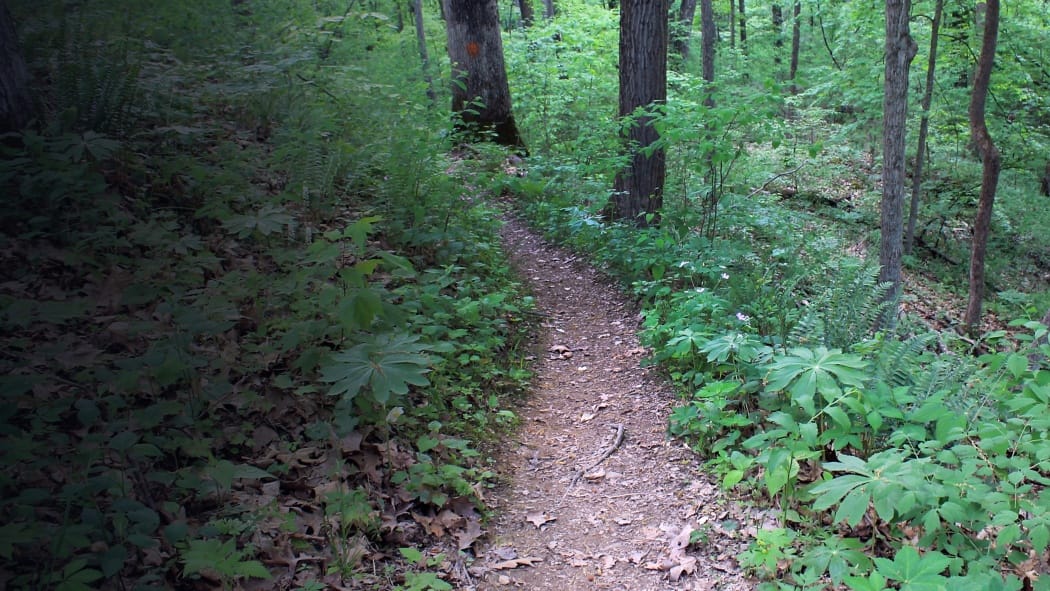
Other Hiking Trails in Zaleski State Forest:
- South Loop Trail: This trail is about 10 miles long and offers a shorter alternative to the full Zaleski Backpack Trail loop. It's a good option for day hikers or those looking for a less strenuous hike.
- Hope Schoolhouse Trail: A shorter trail at approximately 1.25 miles, the Hope Schoolhouse Trail leads to the historic Hope Furnace, providing a glimpse into the area's industrial past.
- Lake Hope State Park Trails: While not directly part of Zaleski State Forest, nearby Lake Hope State Park offers several hiking trails, including the renowned 14-mile backpacking loop called the "Hope Furnace Trail."
- Wildcat Hollow Trail: This trail is located nearby, in Wayne National Forest. It's about 15 miles long and offers a challenging hike through rugged terrain and scenic woodlands.
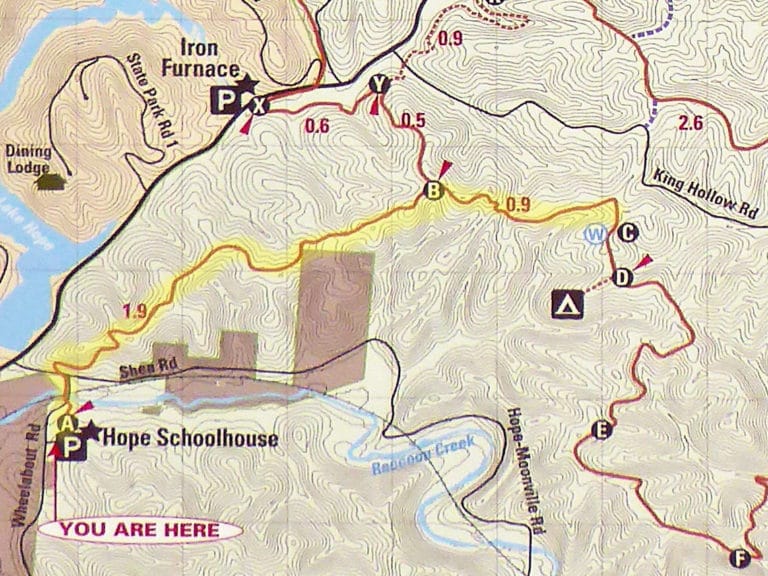
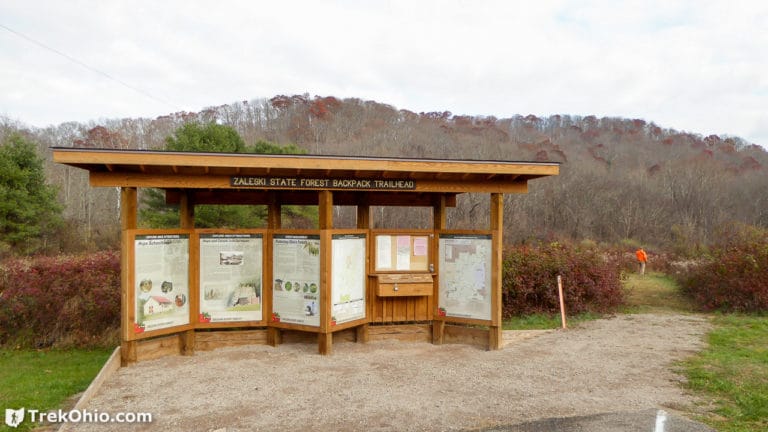
My husband Rob and I did an overnight hiking/camping trip about 2 years ago. We plan to go again this summer. The camping area we used was very well maintained. The hiking was excellent.
Check out the Buckeye Trail and its Sections. You won't be sorry!
If you have any information, suggestions, or questions, do not hesitate to contact us.
